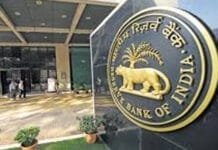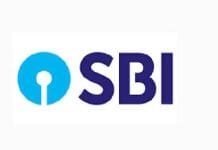The State Bank of India (SBI) has announced an increase in the Marginal Cost of Funds Based Lending Rate (MCLR) by 0.1 percent. This adjustment, effective from June 15, impacts the cost of home loans, making them more expensive for consumers. This article delves into the specifics of the rate hike, its implications for borrowers, and how it affects various loan tenures.
Understanding the MCLR Rate Hike
The MCLR is a crucial interest rate benchmark that banks use to set lending rates for various loans. With the latest increase, the one-year MCLR rate has risen to 8.75 percent from the previous 8.65 percent. This rate adjustment means that borrowers will face higher Equated Monthly Installments (EMIs), thus increasing the overall cost of loans.
Detailed Breakdown of the New MCLR Rates
- Overnight MCLR: Increased from 8.00 percent to 8.10 percent.
- One-month MCLR: Now stands at 8.30 percent, up from 8.20 percent.
- Three-month MCLR: Raised to 8.30 percent from 8.20 percent.
- Six-month MCLR: Increased from 8.55 percent to 8.65 percent.
- Two-year MCLR: Now at 8.85 percent, up from 8.75 percent.
- Three-year MCLR: Adjusted to 8.95 percent, from the previous 8.85 percent.
Impact on Home Loan Borrowers
Home loans, along with most retail loans like auto loans, are typically linked to the one-year MCLR. With the new rates in effect, consumers will experience a notable rise in their monthly repayments. For example, if you have a home loan of INR 50 lakh with a tenure of 20 years, the EMI will increase, adding more financial burden.
Calculating the New EMI
To illustrate, consider a home loan of INR 50 lakh at the previous one-year MCLR rate of 8.65 percent. The monthly EMI would be approximately INR 43,745. With the new MCLR rate of 8.75 percent, the EMI rises to around INR 44,064. This change may seem minor on a monthly basis, but over the loan tenure, it amounts to a significant increase in the total repayment amount.
Effects on Other Loan Types
The rise in MCLR affects not just home loans but also other loan types. Personal loans, education loans, and loans against property are all set to become more expensive. This increase will impact the borrowing capacity and financial planning of numerous households across India.
Exceptions and Considerations
It’s essential to note that this MCLR hike does not affect loans linked to external benchmarks. Since October 2019, banks including SBI have been required to link new loans to external benchmarks such as the RBI repo rate or treasury bill yield. Borrowers with loans tied to these benchmarks will not see a change in their interest rates due to the MCLR hike.
External Benchmark-Linked Loans
For loans linked to the RBI repo rate, changes in the MCLR have no impact. These loans will continue to follow the movements in the repo rate set by the RBI. Hence, if you are considering taking a new loan, opting for one linked to an external benchmark might offer more stability in interest rates.
Strategic Financial Planning for Borrowers
In light of the MCLR increase, borrowers need to reassess their financial strategies. Here are a few tips for managing the impact of higher EMIs:
- Prepayment Options: Consider making prepayments towards your loan principal. This can reduce the overall interest burden and shorten the loan tenure.
- Refinancing: Evaluate the option of refinancing your loan with another bank offering better terms or lower rates linked to external benchmarks.
- Budget Adjustment: Revisit your monthly budget to accommodate the higher EMIs. Cut down on non-essential expenses to ensure smooth loan repayments.
- Financial Advising: Seek advice from financial experts to explore the best options tailored to your financial situation.
Long-term Implications
The increase in MCLR by SBI may set a precedent for other banks to follow suit. As the leading public sector bank, SBI’s rate adjustments often influence the broader banking sector. Consequently, we may observe a ripple effect with other banks also increasing their MCLR rates.
Economic Outlook
From a broader economic perspective, the MCLR hike can be seen as a response to rising cost pressures and the need for banks to maintain their margins. This move can influence consumer spending and borrowing patterns, potentially impacting the real estate market and other sectors dependent on consumer loans.
Conclusion
The State Bank of India’s decision to raise the MCLR rate by 0.1 percent marks a significant shift in the lending landscape. Home loan borrowers, in particular, will need to brace for higher EMIs and adjust their financial planning accordingly. While the increase presents challenges, strategic financial management and exploring alternative loan options can help mitigate the impact.
By staying informed and proactive, borrowers can navigate this period of higher interest rates and ensure their financial health remains robust. As always, consulting with financial advisors and keeping abreast of market changes will be crucial in making well-informed decisions.














